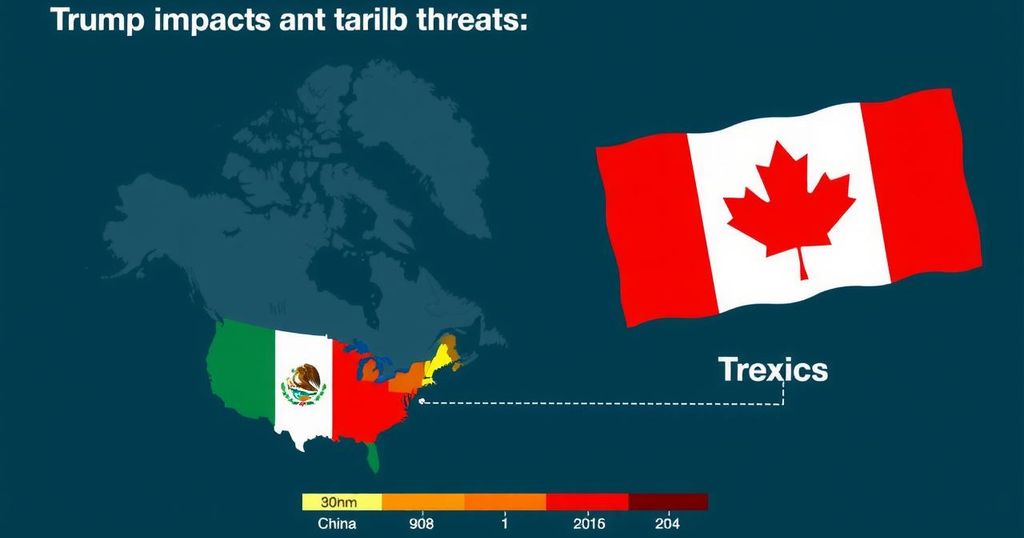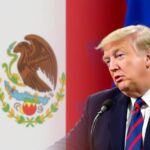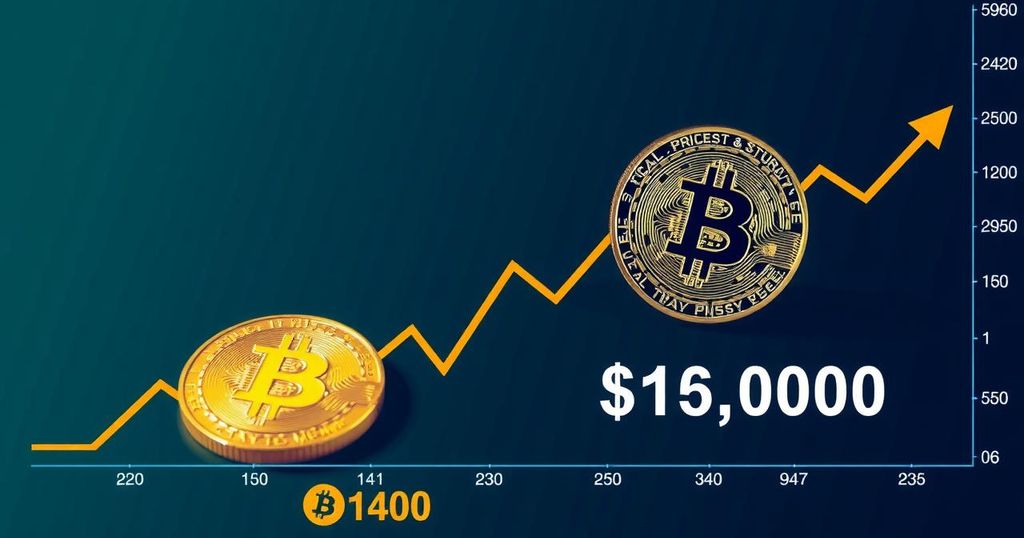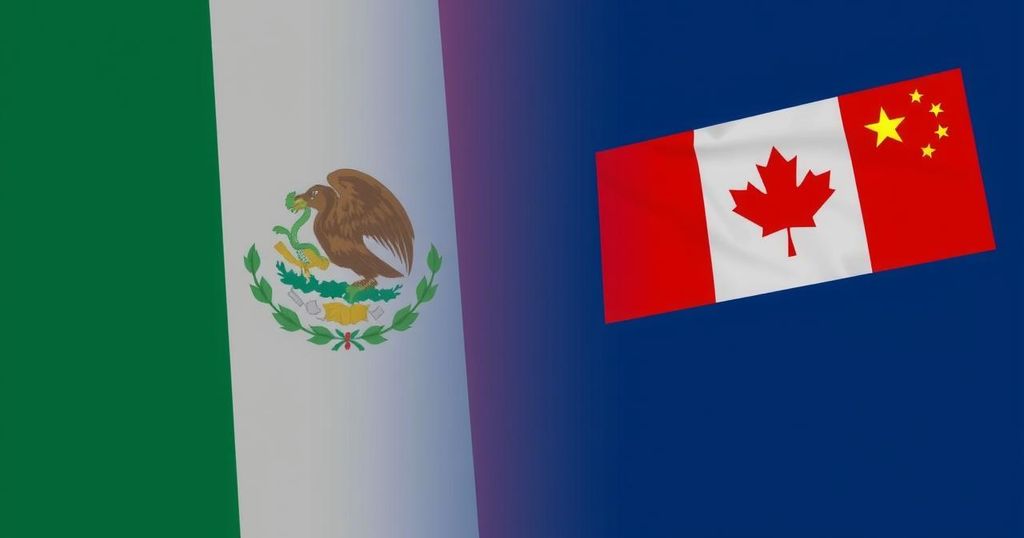Trump’s Tariff Plans on China, Canada, and Mexico Disturb Financial Markets
President-elect Donald Trump has threatened to impose a 10% tariff on Chinese goods and a 25% tariff on imports from Canada and Mexico, aimed at curbing illegal immigration and drug trafficking. This announcement has negatively affected the markets, causing currencies from Canada and Mexico to decline. Trump plans to sign an executive order on his first day in office to implement these tariffs, which he contends are necessary due to the influx of drugs across the borders.
In a recent announcement on his Truth Social platform, President-elect Donald Trump declared his intention to impose significant tariffs on imports from China, Mexico, and Canada following his election victory. Trump proposed a 10% tariff on goods from China and a sweeping 25% tariff on all products from both Mexico and Canada. This declaration has unsettled financial markets, causing the value of the Canadian dollar to drop to a four-year low and the Mexican peso to approach its weakest level since 2022, while the Chinese yuan also fell against the dollar.
Trump justified these tariffs by linking them to a perceived crisis of illegal immigration and drug trafficking from Mexico and Canada, alleging that these countries are not adequately addressing the flow of fentanyl into the United States. He stated, “Until such time as they stop, we will be charging China an additional 10% Tariff, above any additional Tariffs, on all of their many products coming into the United States of America.”
In a further commitment, Trump indicated that his administration would enact a 25% tariff on all imports from Mexico and Canada under an executive order, to be signed on his first day in office. He reasoned, “As everyone is aware, thousands of people are pouring through Mexico and Canada, bringing Crime and Drugs at levels never seen before.”
Trade experts and business leaders have expressed concerns regarding the impact of such tariffs, especially after Trump’s appointment of Scott Bessent as the next U.S. Treasury Secretary, which many interpreted as a signal for a potentially less aggressive trade approach.
The recent announcement by President-elect Trump regarding potential tariffs is indicative of a continuing trend of aggressive trade policies aimed particularly at China and North American neighbors. Throughout his campaign, Trump emphasized his stance on taxation of imports as a mechanism to protect American jobs and address illegal immigration concerns. His recent tariff threats are significant as they represent a major shift in U.S. trade relations, as previous administrations have sought to cultivate cooperative economic ties.
In summary, President-elect Donald Trump’s tariff threats against China, Mexico, and Canada mark a notable escalation in his trade policy rhetoric. The proposed tariffs aim not only to address trade imbalances but are also framed within the context of immigration and drug trafficking issues. The implications of these tariffs remain uncertain, particularly regarding their impact on market stability and international relations, as responses from affected nations are still pending.
Original Source: www.ndtv.com








Post Comment